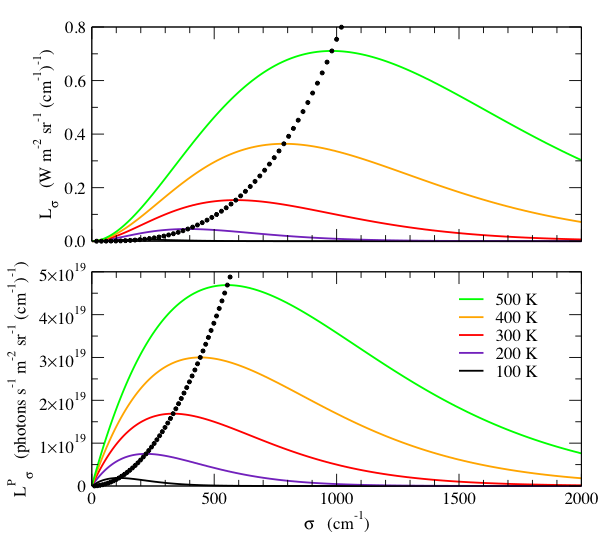Units of Wavenumbers
(click on equations to view enlarged)
Yet a third spectral unit, commonly used in spectroscopy, is wavenumber, the number of waves per cm: σ = ν /100c cm-1. Converting (1) to these units gives
.
(13)
Again, the peak is where the derivative with respect to wavenumber vanishes:
so
. (14)
The peak value is
. (15)
The spectral photon radiance is found by dividing Lσ by the energy of a photon, 100hcσ :
. (16)
We next find the wavenumber at the peak of the spectral photon radiance:
and . (17)
The peak spectral photon radiance is
. (18)
Fig. 3 shows plots of Lσ and LσP for various temperatures. Note again the important difference between the spectral radiance and spectral photon radiance.

Fig. 3 - Spectral
radiance, Lσ , (top) and the spectral
photon radiance, LσP, (bottom) as a function
of wavenumber, σ,
for various temperatures. The
small black dots indicate the wavenumber and value of the peak, at 10 K
temperature intervals. Note that
Lσ
and LσP have different wavenumber dependences. Although the peak wavenumber is
proportional to T for both
quantities, Lσ
peaks at a higher wavenumber than LσP. Furthermore, the peak
value of Lσ
increases as T 3,
whereas the peak value of LσP increases as T 2.